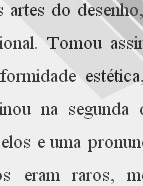

................................
Portuguese art historiography of the 19th century emerged around 1815 with painters Cyrillo Volkmar Machado and José da Cunha Taborda; it acquired consistency thirty years later with the Prussian ambassador Athanasius Raczynski, and gained critical sophistication with Ramalho Ortigão, but it was undoubtedly Joaquim de Vasconcelos who represented it best as he embodied the greatest breath of renewal. It was born amid speeches on the nobility of the art of drawing, it became full-blown in its erudition, and was coloured with national enthusiasm. It thus took on a dual personality, which lasted until the Estado Novo [New State], and an aesthetic uniformity, which made it tenaciously oppose "modern" currents. It ended in the second decade of the 20th century with the last books by Joaquim de Vasconcelos and a pronounced generational change.
Until 1780, studies were rare, except for a few noteworthy unpublished literary productions by painter and architect Francisco de Holanda (Lisbon, 1517 - Lisbon, 1584) and painter Félix da Costa Meesen (1639-1712). The sculptor Machado de Castro (Coimbra, 1731 - Lisbon, 1822) expressed the eighteenth century through booklets on the merits and usefulness of the art of drawing.
True historiographical intention began to emerge, as stated above, in 1815, with artists who used their writings to safeguard the memory and importance of their art. Cyrillo Volkmar Machado and José da Cunha Taborda illustrated these beginnings under the banner of classical rules and biographical focus. In the same year, royal painter José da Cunha Taborda (Fundão, 1766 - Lisbon, 1834), active in the Palaces of Ajuda and Mafra, added a Memória dos mais Famosos Pintores Portugueses [Memoir of the Most Famous Portuguese Painters] to his translation of Prunetti's Regras da Arte da Pintura [Rules of the Art of Painting]. In 1823, in a posthumous work, painter Cyrillo Volkmar Machado (Lisbon, 1748-1823) presented a Coleção de Memórias Relativas às Vidas dos Pintores e Escultores, Arquitectos e Gravadores Portugueses e dos Estrangeiros que Estiveram em Portugal [Collection of Memoirs on the Lives of Portuguese Painters and Sculptors, Architects and Engravers and of Foreigners who Resided in Portugal], which featured almost one hundred and fifty names. Paulo Varela Gomes defined him as "the first Portuguese art historian and the man who wrote most in our country about art issues from Francisco de Holanda to the end of the 19th century" (A Confissão de Cyrillo [The Confession of Cyrillo], 1992, p. 15).
